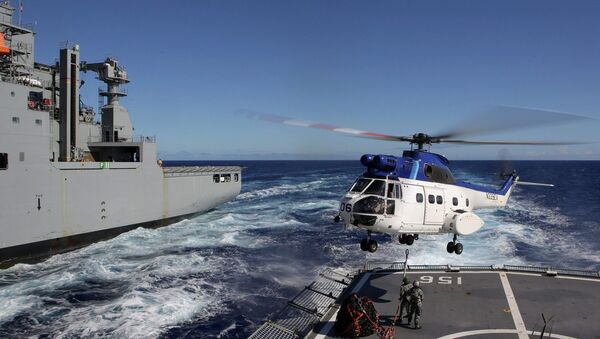Jim Sciutto (@jimsciutto) March 2, 2016
On March 8, 2014, passenger jet Malaysia Airlines Flight MH370 disappeared with 239 people aboard. At the time, the world watched as the best rescue efforts could not find a trace of the aircraft. The mystery remains, and the story only deepens as new evidence has come to light.
On Wednesday, debris discovered off the channel between Mozambique and Madagascar suggests that the plane crashed into the Indian Ocean.
The debris, believed to be a horizontal stabilizer from the jet, will be sent to Malaysia for official examination. If confirmed, this would be the second piece of MH370 debris discovered by Australian Transport Safety Bureau divers who continue the search at the request of their Malaysian counterparts.
The first confirmed piece was attributed to the ill-fated flight in September 2015, after an investigation by France’s aeronautical research lab. That piece was discovered over 2,000 miles away from the theorized crash site, on Reunion Island, a French protectorate off Africa’s east coast. The Reunion Island debris was determined to be part of a wing known as a flaperon, which prevents a plane from deviating sideways.
Wednesday’s discovery provides hope that officials may subsequently be able to find the fuselage of the airplane. While the news was welcomed, Malaysia’s Minister of Transport, Liow Tong Lai, called for patience after the latest discovery. He cautions against speculation that Wednesday’s debris does, in fact, belong to MH370 which, at this time, has not been confirmed.
The MH370 tragedy sparked an international discussion on airline safety and tracking around the world. The flight, departing from Kuala Lumpur, Malaysia and on course to Beijing, disappeared suddenly from radar view with no prior distress signal. Investigators have struggled to determine precisely where the plane flew off course, with theories abounding as to whether the plane crashed at the point it disappeared from the radar or whether it continued to fly.
In response to the incident, the United Nations announced a plan to allow planes to send tracking data to satellites. The automatic dependent surveillance-broadcast (ADS-B) will create real-time tracking capabilities to provide pilots with a 3D view of their airspace, according to Air and Space Smithsonian Magazine.
The new technology has been used by American aviation carriers for years, and will ensure another layer of detection in the event of a radar malfunction, reducing the risk for plane disappearances.




